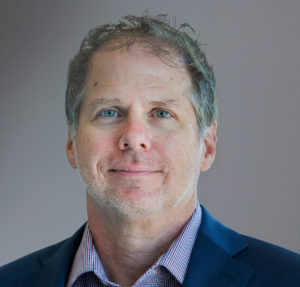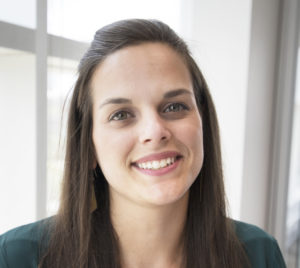Cleveland is a diverse Ohio city with a rich history—one where many communities have retained their cultural roots over decades of change. But despite its many successes, Cuyahoga County, where Cleveland is located, also has many challenges, including one of the highest infant mortality rates in the United States.
One of the primary risk factors driving this statistic is poverty, including a lack of access to prenatal care and convenient access to healthcare facilities, which contributes to premature births. Chronic diseases such as diabetes and high blood pressure, often exacerbated by poor nutrition, also have a devastating impact on infant and maternal health.
When Cleveland-based healthcare system University Hospitals (UH) wanted to develop a new Rainbow Babies & Children’s Hospital (UH Rainbow) outpatient facility, it chose a site on Cleveland’s east side—one of the city’s oldest communities and one of its most vulnerable—to bring health resources to infants and mothers in the underserved area.
A community advisory board with 35 organizations and more than 70 local stakeholders was created to help inform the design process and identify community needs. This feedback catalyzed an extensive program of services, including primary care, adolescent medicine, prenatal and gynecological care, a vision clinic, dental clinic, nutrition program, pharmacy, mental health services, a medical/legal partnership, and health-related education programs.
Because children and pregnant women are particularly vulnerable to environmental health hazards, UH Rainbow prioritized sustainable design and environmental stewardship to create a healthy environment for patients, staff, and the community at its UH Rainbow Center for Women & Children, which opened in 2018. Partnering with architecture firm Moody Nolan (Cleveland) and sustainability consultants The Construction Green Team (Cleveland), the project team paid careful attention to building geometry, site design, sustainable systems, and space planning to contribute to this vision, and in October 2019 the clinic became the first LEED Platinum certified healthcare facility in Ohio.
In a neighborhood disproportionately affected by poor air quality, reducing UH Rainbow Center’s energy consumption doesn’t just impact building performance, it also reduces atmospheric pollution and the associated health implications for area residents. At the clinic, the façade’s geometric angles are designed to reduce direct sunlight into the facility, reducing solar heat gain and energy consumption of the mechanical system. The glazing also helps create a welcoming entrance and provides street views to reinforce visibility and safety.
In addition to employing passive design strategies, the project team partnered with engineering firm Karpinski Engineering (Cleveland) to target additional opportunities to reduce energy consumption, including a high-performance building envelope and the use of efficient mechanical systems, lighting and occupancy sensors, and energy-efficient appliances. A 170 kWh photovoltaic array provides onsite renewable energy generation of 30 percent, by cost, of the facility’s needed power and a 44.5 percent reduction in overall energy costs as compared to a baseline building of the same type.
Furthermore, converting the existing impermeable hardscape so that 44.5 percent of it hosts native vegetation helps manage stormwater and reduce runoff pollution, which returns directly to the watershed, and, critically, the city’s drinking water supply. Re-vegetating the site also contributed to the goals of neighborhood improvement and creating a connection to nature.
The idea of an urban garden theme guided the design of the building’s interior, with a focus on incorporating ample daylight, views out to the green space, and nature-inspired patterns and materials. Biophilic principles were applied to patient spaces as well as staff areas, including views to the outdoors from workstations and a rooftop garden for respite. To optimize indoor air quality, specified materials, such as flooring and furniture, are compliant with the Healthier Hospitals’ Healthy Interiors initiative, and, whenever possible, sourced regionally to minimize embodied carbon. These efforts helped to reduce the environmental footprint of the center and optimize indoor environmental quality to support healthy patient outcomes.
Together, the sustainable and community-driven design approach created a facility that helps UH Rainbow achieve the goal of improving the health and well-being of local families while leaving the patients feeling heard and respected.
 Tim Fishking, FAIA, is a partner and national healthcare practice leader at Moody Nolan (Columbus, Ohio). He can be reached at [email protected].
Tim Fishking, FAIA, is a partner and national healthcare practice leader at Moody Nolan (Columbus, Ohio). He can be reached at [email protected].
 Lindsey Freel is the sustainable design facilitator at Moody Nolan (Columbus). She can be reached at [email protected].
Lindsey Freel is the sustainable design facilitator at Moody Nolan (Columbus). She can be reached at [email protected].












